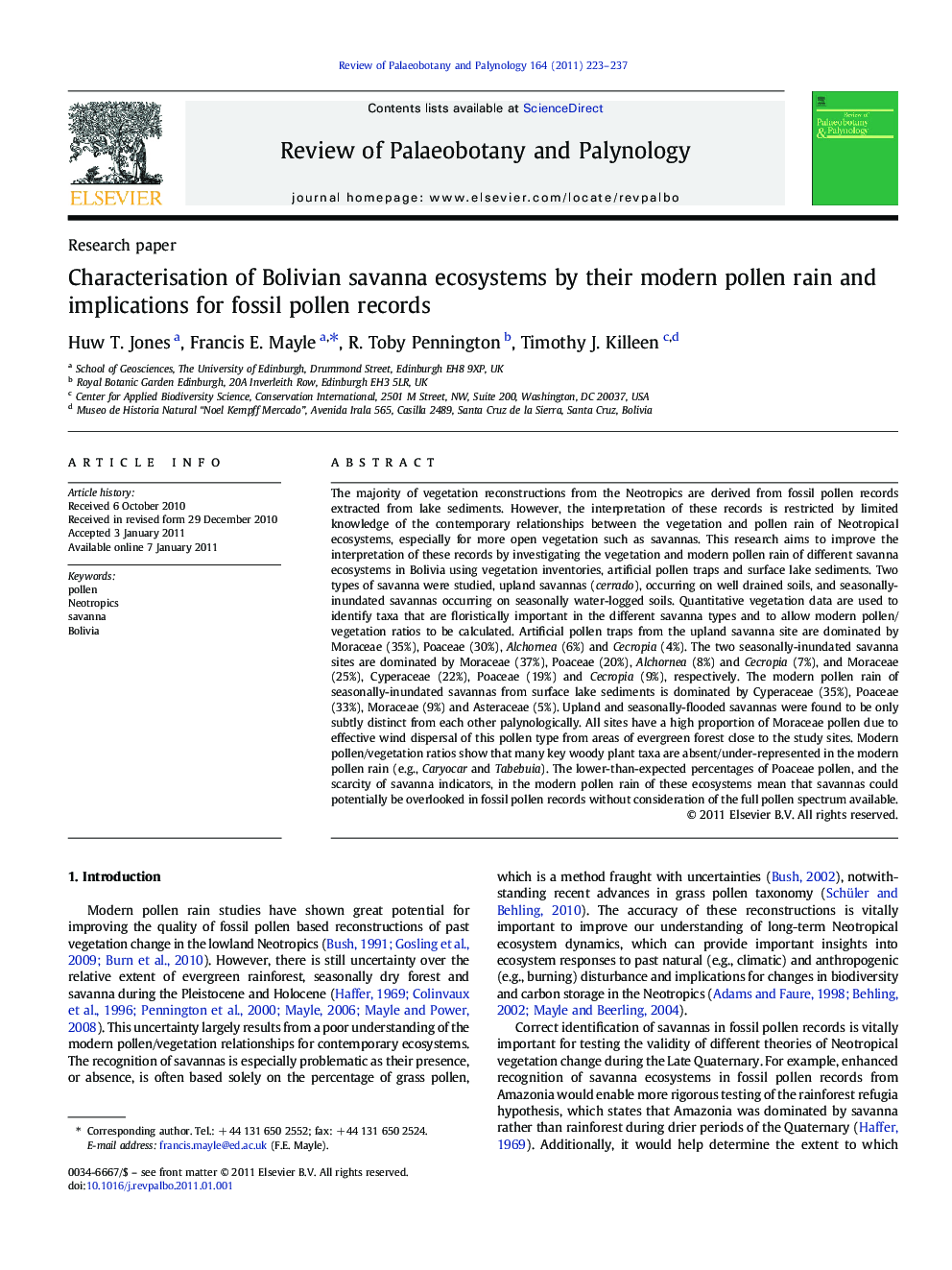| کد مقاله | کد نشریه | سال انتشار | مقاله انگلیسی | نسخه تمام متن |
|---|---|---|---|---|
| 4750545 | 1642536 | 2011 | 15 صفحه PDF | دانلود رایگان |

The majority of vegetation reconstructions from the Neotropics are derived from fossil pollen records extracted from lake sediments. However, the interpretation of these records is restricted by limited knowledge of the contemporary relationships between the vegetation and pollen rain of Neotropical ecosystems, especially for more open vegetation such as savannas. This research aims to improve the interpretation of these records by investigating the vegetation and modern pollen rain of different savanna ecosystems in Bolivia using vegetation inventories, artificial pollen traps and surface lake sediments. Two types of savanna were studied, upland savannas (cerrado), occurring on well drained soils, and seasonally-inundated savannas occurring on seasonally water-logged soils. Quantitative vegetation data are used to identify taxa that are floristically important in the different savanna types and to allow modern pollen/vegetation ratios to be calculated. Artificial pollen traps from the upland savanna site are dominated by Moraceae (35%), Poaceae (30%), Alchornea (6%) and Cecropia (4%). The two seasonally-inundated savanna sites are dominated by Moraceae (37%), Poaceae (20%), Alchornea (8%) and Cecropia (7%), and Moraceae (25%), Cyperaceae (22%), Poaceae (19%) and Cecropia (9%), respectively. The modern pollen rain of seasonally-inundated savannas from surface lake sediments is dominated by Cyperaceae (35%), Poaceae (33%), Moraceae (9%) and Asteraceae (5%). Upland and seasonally-flooded savannas were found to be only subtly distinct from each other palynologically. All sites have a high proportion of Moraceae pollen due to effective wind dispersal of this pollen type from areas of evergreen forest close to the study sites. Modern pollen/vegetation ratios show that many key woody plant taxa are absent/under-represented in the modern pollen rain (e.g., Caryocar and Tabebuia). The lower-than-expected percentages of Poaceae pollen, and the scarcity of savanna indicators, in the modern pollen rain of these ecosystems mean that savannas could potentially be overlooked in fossil pollen records without consideration of the full pollen spectrum available.
Research Highlights
► We investigate the pollen-vegetation relationships of two types of Bolivian savanna.
► Pollen assemblages of cerrado and seasonally-flooded savannas are subtly distinct.
► High proportions of Moraceae pollen are due to wind dispersal from nearby rainforest.
► Savanna trees are poorly represented in the pollen rain of both savanna types.
Journal: Review of Palaeobotany and Palynology - Volume 164, Issues 3–4, April 2011, Pages 223–237